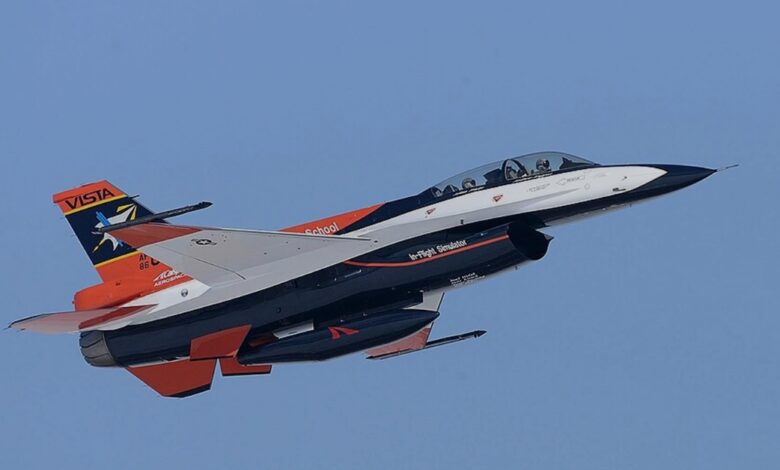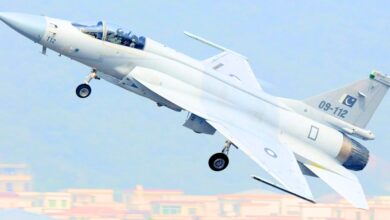
US Air Force Uses AI-Piloted Stealth Drones as Top Gun Instructors
US Air Force Uses AI-Piloted Stealth Drones as Top Gun Instructors
To prepare its fighter pilots for combat, the US Air Force traditionally uses mock battles with simulated enemy jets. These “adversary” jets are usually flown by experienced Air Force pilots or contractors who are often former pilots themselves.
This system is similar to the one used by the famous US Navy “Top Gun” school and other Navy and Marine training programs, where top instructors and contractors act as adversaries in mock battles.
Now, artificial intelligence (AI) is set to become a part of this training. Recently, the Air Force awarded a $98 million contract to California-based drone maker General Atomics to modify two MQ-20 jet-powered drones. These drones will be used as prototypes for a new class of AI-driven adversary aircraft.
This is a significant development. As drones and AI technology improve, they are being combined to create autonomous warplanes. Early tests suggest that AI-controlled jets could be even more effective than those flown by humans.
The Air Force needs to train against advanced drones if it wants to be prepared for future combat involving similar technology. AI adversaries could also allow human pilots to focus on actual combat missions.
Four years ago, it was clear that AI-driven aerial warfare was on the horizon. In 2020, the US Defense Advanced Research Projects Agency (DARPA) used an Air Force pilot, trained on the Lockheed Martin F-16, to simulate dogfights against an AI pilot developed by a tech company in Maryland.
The mock battles took place in a flight simulator at Johns Hopkins University in Maryland. During these simulations, an F-16 pilot with the call sign “Banger” was defeated by an AI pilot. Banger admitted that traditional tactics weren’t effective against the AI, which maneuvered more quickly and aggressively.
Last year, a real-life test was conducted in the sky, where an AI-controlled F-16 fought against a human-piloted F-16. The Air Force did not disclose the outcome of this match. However, in May, Air Force Secretary Frank Kendall flew in an AI-piloted F-16 during a traditional dogfight against a human pilot. Kendall noted that the fight was evenly matched, but the human pilot was very experienced. He believed that if the AI had faced a less experienced pilot, like most front-line pilots, it would have won.
The Air Force is using the insights gained from these AI air battles to develop a new type of drone known as “loyal wingman” drones. These drones are intended to support manned fighters in future battles. They are designed to be highly autonomous, meaning they can follow general commands from human controllers, such as moving to a location or attacking a target, but will make their own decisions on how to maneuver.
The United States is not the only country developing AI-controlled warplanes. The British, Japanese, Chinese, Russian, and Australian armed forces are also working on AI for aerial missions and advanced drones that can use these AI systems effectively.
AI dogfights, where planes controlled by AI battle each other, might happen sooner than expected. If the MQ-20 drones perform as planned, the Air Force could start preparing for these scenarios. The MQ-20 has stealth features that help it avoid radar detection, making it a challenging opponent in long-range aerial combat. Many of the older manned adversary jets currently used lack these stealth capabilities and aren’t ideal stand-ins for the latest enemy aircraft.
However, the MQ-20 is subsonic and was designed mainly for ground attack missions, so it might not be a strong opponent for human pilots flying jets designed for air-to-air combat, especially if they can overcome its stealth technology.
The initial contract is for just two MQ-20 drones, which are prototypes. Two AI-controlled drones won’t be enough for effective training. The Air Force may eventually need many more of these drones, including high-performance supersonic models with advanced technologies.
A large fleet of AI adversaries could potentially replace human adversaries. Currently, the Air Force uses private contractors with ex-military planes and has two adversary squadrons in Nevada, flying F-16s and Lockheed Martin F-35 stealth fighters. The Navy’s Topgun school is also based in Nevada, benefiting from the large training areas there.
Until recently, the Air Force had three adversary units, but the 18th Aggressor Squadron in Alaska was converted to a traditional fighter squadron to focus on intercepting increasing numbers of Russian warplanes in the region.
The Air Force is looking for ways to maximize the effectiveness of its current force structure. Using drone adversaries could help by taking over some training tasks from human pilots and allowing those pilots to practice against advanced enemy drones.
Europe’s Stunning High-Tech Luxury Train Golden Pass Express






